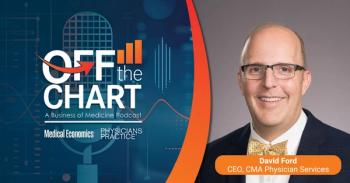
Your Profitability Depends on Managing Practice Overhead
An experienced practice owner talks about the three areas where you can cut costs in order to lower overhead and stay profitable.
Prices for consumer goods are always on the rise and when they go down it is newsworthy (such as the price of gasoline over the past few years). We all have to manage our personal budgets and make adjustments to account for fluctuating prices on essential goods. This is generally referred to as the "cost of living."
Medical practices are no different. Successfully managing overhead cost can be the difference between being profitable or carrying a deficit. There are three very important areas of overhead cost that should be carefully managed: Personnel Cost, Supplies, and Purchased Services.
Personnel
The biggest chunk of overhead is almost always personnel cost. Most businesses will give employees a cost-of-living raise every year, usually recommended to be in the 3-5 percent range. However, if you have an exceptionally lean year, this can be lower than the average.
The first question a medical practice should address is whether you need as many employees as you have on the payroll. It is worthwhile to critically analyze how many people you have in each position and if you can get by with less. You may not have to let people go, but when there is natural attrition, the best question is to ask: "Do you really need to back fill that position?" In many cases, those duties can be spread among the employees you already have. This will obviously decrease overhead cost.
The second question that a practice owner or manager should ask is whether the employees you have are optimizing their time on the job. Do you have a lot of overtime pay? If so, it is critical to ban overtime, except when it is approved in advance. It's amazing how most people get more efficient when they are busy and tend to develop lazy habits when they are not. Just knowing they have to finish their work by the end of their shift because they will not get paid for overtime is a strong incentive for increased efficiency.
Along this line is how many salaried employees you have versus hourly pay workers. It is advisable that only critically needed personnel receive a salary, especially those that would possibly generate a lot of overtime in order to perform their duties, such as the office manager. Increasing someone's salary is the cost that just keeps on going, so offer bonus pay instead of large salary increases as an alternative.
The third question is to critically analyze how productive and profitable your providers are for the practice. Providers are the revenue generators for your practice, but they are also the most costly of your employees. Do you know how many patients each one needs to see per day/week/month in order to cover the cost of doing business? This is called the "break-even" point. There are many formulas available to generate this number, however you must know your total overhead cost per full time equivalent (FTE) provider as well as the average charge per patient and your practice collection percentage. If the overhead cost per day is $200 and you receive $10 remuneration per patient, the break-even number would be 20 patients per day just to cover costs. In other words, a provider would need to see more than 20 patients per day in order for the practice to be profitable.
Supplies
The next area of overhead cost that needs to be evaluated is medical and office supplies. It is obvious that a practice has ongoing needs for supplies in order to provide services for patients but tight management of inventory is critically important. Having 10 boxes of exam gloves in each size in the storage closet is fine, but having 10 cases of gloves in each size is just storing money on the shelf. Make sure that time sensitive supplies are used first and ordered judiciously. Throwing away expired products (such as vaccines and injectable medications) is throwing money away, so don't order more than you will reasonably use. Also, critically analyze whether you use a medication or vaccine often enough to justify keeping that investment sitting around in your office. It is also helpful to know how quickly your practice can get resupplied in order to never run out of critical inventory. Lastly, to streamline the ordering process and avoid over-ordering, assign just one person to manage supplies for the front desk and another for the clinical area (a very small office could have one person managing both).
While on the subject of supplies, you should shop around for the best prices. There are many vendors available to supply your office (remember to check online as well) and you can certainly have more than a single supplier. Don't feel obligated to use a company just because you've been their customer for years and you like their sales representative. This isn't personal, it's business! The funny thing is that when you start shopping around, often the deals from your old stand-by get better. Additionally, there are also volume purchasing arrangements between multiple medical practices. There may be one in your area, so check around.
Purchased Services
The last section on overhead that deserves attention is all of the goods and services that your practice purchases. Are you happy with the companies that provide services to your practice such as janitorial, printing, and accounting? Do you know which of your advertising venues are most successful for your practice and provide the best return on investment for you? If you regularly provide lunch for staff meetings, can you ask everyone to brown bag their own meal? Have you considered rewarding staff members for helping you economize and save money for the practice? Employees respond positively when they know that raises and bonuses depend on the practice controlling overhead cost.
The most important quality of a medical practice is to stay profitable. Top of the line equipment is expensive and attracting new medical talent involves a considerable investment. No matter that your practice delivers the very best care to your patients, if you are not profitable, you won't be around very long to deliver that excellent care. By carefully managing your overhead, your bottom line will undoubtedly improve.
Newsletter
Optimize your practice with the Physicians Practice newsletter, offering management pearls, leadership tips, and business strategies tailored for practice administrators and physicians of any specialty.














